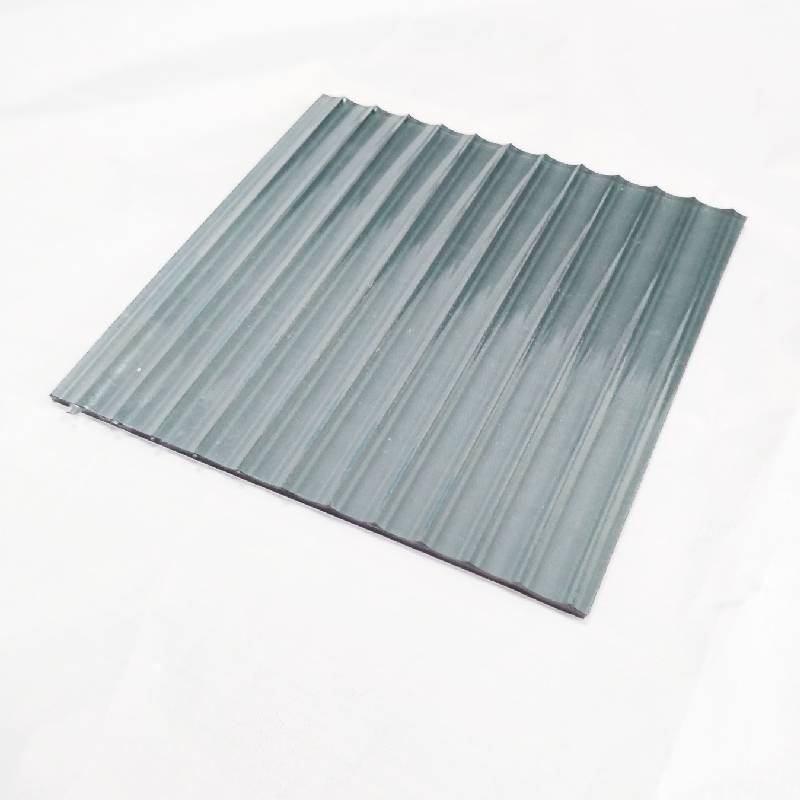The Art and Elegance of Decorative Glass
Decorative glass has become an essential element of modern design, seamlessly blending functionality with aesthetic appeal. From stained glass windows that tell stories of yore to contemporary glass sculptures that challenge traditional forms, decorative glass occupies a unique niche in the world of art and interior design. This material not only serves as a medium for artistic expression but also enhances spaces, bringing color, light, and texture into various environments.
The history of decorative glass can be traced back thousands of years. The ancient Egyptians and Mesopotamians practiced glassmaking techniques wherein they crafted intricate designs and vibrant colors. However, it was during the Roman Empire that glass began to evolve as an artistic medium. The production of colored glass became widespread, and artisans started to create pieces that showcased remarkable skill and creativity. This period laid the foundation for the diverse applications of decorative glass we see today.
One of the most iconic forms of decorative glass is stained glass, a technique that has been utilized in cathedrals and churches across Europe for centuries. These breathtaking works of art transform sunlight into a kaleidoscope of colors, creating an ethereal atmosphere within sacred spaces. Stained glass artists employ various methods, such as painting and layering, to achieve intricate designs depicting biblical stories or saints. While traditionally associated with religious architecture, stained glass has found its way into residential design, enhancing everything from entryways to interior doors.
In the realm of modern design, decorative glass has evolved to embrace minimalist aesthetics. Clear and frosted glass panels are often utilized to create a sense of openness and fluidity in contemporary homes. Glass partitions and railings not only serve functional purposes but also contribute to a sleek, sophisticated ambiance. The use of colored and patterned glass, such as etched or laminated options, adds a touch of personality while maintaining an airy feel in spaces. Designers often incorporate glass as a means to visually expand areas and maximize natural light, creating inviting environments.
decorative glass
Art glass, another fascinating category, consists of unique, handmade pieces created by skilled artisans. This type of decorative glass often takes the form of vases, bowls, and sculptural elements that highlight the beauty of the material itself. Techniques such as blowing, fusing, and casting allow artists to manipulate glass in various ways, resulting in one-of-a-kind creations that can serve as stunning focal points in any room. Whether displayed on a shelf or as part of an installation, art glass captures the imagination and elevates the overall decor.
In addition to its aesthetic properties, decorative glass has functional applications. For instance, glass tiles have gained popularity in interior design, primarily for kitchens and bathrooms. Their durability, resistance to moisture, and ease of cleaning make them an ideal choice for these spaces. Furthermore, glass can be used for backsplashes, accent walls, and shower enclosures, where it can reflect light and create an illusion of greater space. In commercial settings, decorative glass is often employed in storefronts and office partitions, enhancing visibility and creating a modern, inviting atmosphere.
Sustainability is another aspect of decorative glass that has gained traction in recent years. As environmental consciousness grows, many artists and designers are turning to recycled glass to create decorative pieces. This not only reduces waste but also contributes to the development of distinctive artworks that tell a story of transformation. By giving new life to discarded materials, artists are making a statement about sustainability while producing stunning, eye-catching decor.
In conclusion, decorative glass embodies the intersection of art, design, and function. Its versatility allows it to transcend time periods and design styles, making it a cherished element in both traditional and contemporary spaces. Whether through the enchanting hues of stained glass, the sleek lines of modern installations, or the exquisite craftsmanship of art glass, this material offers endless possibilities for creative expression. As we continue to explore new designs and techniques, decorative glass will undoubtedly remain a timeless medium, enriching our spaces and inspiring our imagination.
 Afrikaans
Afrikaans  Albanian
Albanian  Amharic
Amharic  Arabic
Arabic  Armenian
Armenian  Azerbaijani
Azerbaijani  Basque
Basque  Belarusian
Belarusian  Bengali
Bengali  Bosnian
Bosnian  Bulgarian
Bulgarian  Catalan
Catalan  Cebuano
Cebuano  Corsican
Corsican  Croatian
Croatian  Czech
Czech  Danish
Danish  Dutch
Dutch  English
English  Esperanto
Esperanto  Estonian
Estonian  Finnish
Finnish  French
French  Frisian
Frisian  Galician
Galician  Georgian
Georgian  German
German  Greek
Greek  Gujarati
Gujarati  Haitian Creole
Haitian Creole  hausa
hausa  hawaiian
hawaiian  Hebrew
Hebrew  Hindi
Hindi  Miao
Miao  Hungarian
Hungarian  Icelandic
Icelandic  igbo
igbo  Indonesian
Indonesian  irish
irish  Italian
Italian  Japanese
Japanese  Javanese
Javanese  Kannada
Kannada  kazakh
kazakh  Khmer
Khmer  Rwandese
Rwandese  Korean
Korean  Kurdish
Kurdish  Kyrgyz
Kyrgyz  Lao
Lao  Latin
Latin  Latvian
Latvian  Lithuanian
Lithuanian  Luxembourgish
Luxembourgish  Macedonian
Macedonian  Malgashi
Malgashi  Malay
Malay  Malayalam
Malayalam  Maltese
Maltese  Maori
Maori  Marathi
Marathi  Mongolian
Mongolian  Myanmar
Myanmar  Nepali
Nepali  Norwegian
Norwegian  Norwegian
Norwegian  Occitan
Occitan  Pashto
Pashto  Persian
Persian  Polish
Polish  Portuguese
Portuguese  Punjabi
Punjabi  Romanian
Romanian  Russian
Russian  Samoan
Samoan  Scottish Gaelic
Scottish Gaelic  Serbian
Serbian  Sesotho
Sesotho  Shona
Shona  Sindhi
Sindhi  Sinhala
Sinhala  Slovak
Slovak  Slovenian
Slovenian  Somali
Somali  Spanish
Spanish  Sundanese
Sundanese  Swahili
Swahili  Swedish
Swedish  Tagalog
Tagalog  Tajik
Tajik  Tamil
Tamil  Tatar
Tatar  Telugu
Telugu  Thai
Thai  Turkish
Turkish  Turkmen
Turkmen  Ukrainian
Ukrainian  Urdu
Urdu  Uighur
Uighur  Uzbek
Uzbek  Vietnamese
Vietnamese  Welsh
Welsh  Bantu
Bantu  Yiddish
Yiddish  Yoruba
Yoruba  Zulu
Zulu 

